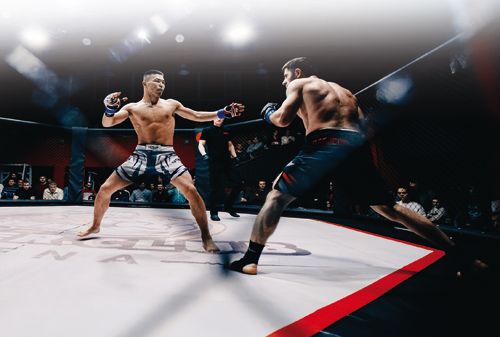Effect of Cold Water Immersion on MMA Athletes
Researchers from the University of Minnesota have investigated the effects of cold water immersion on athlete recovery in combat sports training using SCX HPLC and ELISA.
Photo Credit: Parilov/Shutterstock.com

Researchers from the University of Minnesota have investigated the effects of cold water immersion (CWI) on athlete recovery in combat sports training using strong cation exchange high performance liquid chromatography (SCX HPLC) and enzymeâlinked immunosorbent assay (ELISA) (1).
Combative sports, such as mixed martial arts (MMA), are an incredibly intense form of exercise with athletes often encountering physiological trauma throughout their daily training. This puts an emphasis on recovery as consistent and sustained training sessions are required to improve performance. An added benefit is the simultaneous reduction of the risk of developing long term or reoccurring injuries. Such injuries are so common place in combative sports that it is said “no fighter ever goes into the cage or ring 100%”. With obvious impacts on performance and development, all manner of techniques have been developed to aid recovery.
One such technique for recovery is CWI whereby parts of the body or the whole body are immersed in ice or ice water for a set duration following intense training. CWI has been widely adopted by athletes of physical impact sports, such as rugby union and league (2,3), with success. However, the reliability of the scientific evidence is limited partially because of the absence of a standardized protocol and a lack of research on the physiological response. Furthermore, the effect of CWI in a sport that involves repeated high-force direct impacts to the body has been neglected.
Investigating the immediate effect of CWI on MMA fighters, researchers measured urinary neopterin, urinary total neopterin, urinary myoglobin, and saliva cortisol to quantify oxidative stress, inflammation, muscle damage, and stress, respectively, following a MMA contest-preparation sessions.
Results indicated that in a sport such as MMA, where severe structural and inflammatory stress is common, CWI may provide a simple recovery intervention that reduces delayed onset muscle soreness and prolonged inflammation whilst not impairing subsequent training performances.
References
- A.Lindsay et al., Appl. Physiol. Nutr. Metab.42(5), 529–536 (2017).
- C.P. McLellan et al., J. Strength Cond. Res.24(11), 2908–2919 (2010).
- A. Lindsay et al., Eur. J. Sport Sci. 15(6), 543–549 (2015).

Common Challenges in Nitrosamine Analysis: An LCGC International Peer Exchange
April 15th 2025A recent roundtable discussion featuring Aloka Srinivasan of Raaha, Mayank Bhanti of the United States Pharmacopeia (USP), and Amber Burch of Purisys discussed the challenges surrounding nitrosamine analysis in pharmaceuticals.
Extracting Estrogenic Hormones Using Rotating Disk and Modified Clays
April 14th 2025University of Caldas and University of Chile researchers extracted estrogenic hormones from wastewater samples using rotating disk sorption extraction. After extraction, the concentrated analytes were measured using liquid chromatography coupled with photodiode array detection (HPLC-PDA).














